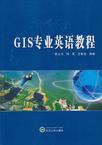GIS专业英语教程
出版时间:2010-9 出版社:武汉大学出版社 作者:费立凡 等编著 页数:271
前言
在过去的十年间,GIS已经从一个高度专业化的领域发展为影响我们生活方方面面的技术,从驾车导航到自然灾害管理,随处可见GIS的深入应用。GIS直到几年前还只有少数研究人员、决策人员和政府职员才能使用,现在几乎每个人都可以创建个性化地图或对GIS数据进行叠置分析。近年来GIS发展势头迅猛,新技术层出不穷,软件频频升级、设备不断更新。要跟上GIS发展的潮流,就必须不断地了解和掌握GIS最新的发展动态,这就对GIS专业人员的英语水平提出了较高要求,因此GIS专业人士都在竭力提高自己的专业英语水平,以便高效地获取GIS新技术信息。同时各大专院校也把GIS专业英语作为必修课,以提高学生的专业英语水平,培养和提高学生运用英语的能力,从而使其具备更高的综合素质及竞争能力。结合多年GIS双语教学及专业英语阅读教学的经验以及相关教改项目的研究成果,编著者按照GIS专业教学计划编写了这本教材,其特点如下:1.原汁原味,教材课文皆来自英文原文,适当之处进行了相应修改,以符合教学目的。2.系统性与广博性相结合。本书分6个部分:GIS的基本概念、GIS的数学基础、GIS的数据结构和数据库、空间数据采集、空间分析、GIS的应用与新发展。内容涵盖了GIS的各个方面。3.教材取材突出“新”字,收集了万维网地理信息系统、三维地图信息系统、基于地图的移动服务、开源软件与GIS等GIS发展的新技术和新领域。4.结合科技英语翻译知识,强化专业阅读训练,以提高广大学生和读者的专业英语综合技能。5.每课附有首次出现的专业术语和生词的中英文对照注释,为广大读者理解和提高阅读技能提供了帮助。6.配合学习内容,每章后附自测练习,以考查学生对课文的理解程度。7.为便于理解,相应课文中附有相关的图表。8.为了加强广大学生理解英文原文,部分课文没有给出相应的译文。感谢颜辉武副教授在本书构思、规划阶段提出的宝贵意见;编写过程中得到林子榆同学、姚玲博士、黄丽娜博士的大力帮助,在此致以衷心感谢。由于编者水平和经验有限,书中欠妥与谬误之处在所难免,希望广大专家和读者不吝赐教。
内容概要
本教材主要介绍地理信息系统(GIS)领域相关基础知识及其应用。全书共6个部分,27课。内容涉及GIS的基础慨念、GIS的数学基础、GIS的数据结构和数据库、空间数据采集、空间分析、GIS的应用与新发展等各个方面。 全书以地理信息系统领域的最新英语时文和原版教材为基础,其内容选材以系统性与广博性为原则,配以适当的中文解释和课后习题,以提高读者阅读与理解地理信息系统英语文献资料的能力。出于培养读者理解英文原文的能力,部分课文没有附带相应译文。本书既可作为高等院校的GIS专业英语教材及相关专业的专业英语教材,也可作为相关专业的工程技术人员提高GIS专业英语水平的读物。
书籍目录
Part Ⅰ The Basic Concept of GIS Lesson 1 What Is GIS New Words Exercises Lesson 2 What Kinds of Functions Does a GIS Have? New Words Exercises Lesson 8 Origins and Applications of GIS New Words ExercisesPart Ⅱ The Basic Mathematical Concept of GIS Lesson 4 What Are Map Projections? New Words Exercises Lesson 5 Classification of Map Projections and Their Applications New Words ExercisesPart Ⅲ Data Structure and Database of GIS Lesson 6 GIS Data Models New Words Exercises Lesson 7 Raster Models New Words Exercises Lesson 8 Compact Storing of Raster Data New Words Exercises Lesson 9 Vector Models New Words Exercises Lesson 10 Compacting Vector Data Model New Words Exercises Lesson 11 Vector to Raster Conversions New Words Exercises Lesson 12 Raster to Vector Conversions New Words Exercises Lesson 18 Quad-Tree Model and Octree Representation of Solids New Words Exercises Lesson 14 Digital Evation Modelling New Words ExercisesPart Ⅳ Acquisition of Spatial Data Lesson 15 Data Sources Ⅰ New Words Exercises Lesson 16 Data Sources Ⅱ New Words Exercises Lesson 17 Surveying New Words Exercises Lesson 18 Satellite Positioning System New Words Exercises Lesson 19 Photogrammetric Mapping New Words Exercises Lesson 20 Collection of Attribute Data and Text Data New Words ExercisesPart Ⅴ Spatial Analysis Lesson 21 Data Analysis Ⅰ New Words Exercises Lesson 22 Data Analysis Ⅱ New Words ExercisesPart Ⅵ Applications and New Development of GIS Lesson 23 Three-Dimensional GIS New Words Exercises Lesson 24 Map-based Mobile Services New Words Exercises Lesson 25 Open Source Software and GIS New Words Exercises Lesson 26 Web GIS New Words Exercises Lesson 27 Contemporary GIS and Future Directions New Words Exercises部分参考译文第一部分 GIS的基本概念 第1课 地理信息系统是什么? 第2课 GIS有哪些基本功能? 第3课 地理信息系统的起源与应用第二部分 GIS的数学基础 第4课 地图投影是什么?第三部分 GIS的数据结构和数据库 第6课 GIS数据模型 第7课 栅格模型 第9课 矢量模型 第11课 矢量到栅格的转换 第14课 数字高程模型第四部分 空间数据采集 第15课 数据源1 第17课 测量 第18课 卫星定位系统第五部分 空间分析 第21课 数据分析1第六部分 GIS的应用与新发展 第23课 三维地图信息系统 第24课 基于地图的移动服务 第25课 开源软件与GIS 第26课 万维网地理信息系统 第27课 当代GIS与未来发展方向附录 科技英语翻译实践与技巧第一章 翻译标准第二章 译者素养第三章 词类的转译 一、转译成动词 二、转译成名词第四章 句子成分的转译 一、转译成主语 二、转译成谓语 三、转译成定语 四、转译成状语 五、转译成补语 六、转译成宾语 七、转译成表语第五章 增译 一、省略句时的增译 二、逻辑要求引起的增译 三、重复引起的增译 四、表达含蓄意义引起的增译 五、增加概括性或分述性词语引起的增译 六、增加量词引起的增译 七、抽象名词、不及物动词和形容词的含义具体化而引起的增译 八、增加表示复数的词引起的增译 九、增加表示时态和方向的词引起的增译 十、增加关联词语引起的增译 十一、修辞需要引起的增译 十二、被动句和祈使句引起的增译第六章 减译 一、冠词的减译 二、代词的减译 三、连接词的减译 四、介词的减译 五、动词的减译 六、名词的减译 七、同义词和近义词的减译 八、文字简洁导致的减译 九、合句导致的减译第七章 量词增译 一、量词的形象性 二、量词的习惯性 三、量词的地方性 四、量词的感情色彩 五、量词的位置及匹配 六、增译量词应避免重复 七、不要增补冗余量词 八、量词的省略第八章 分译 一、单词的分译 二、短语的分译 三、句子的分译第九章 合译 一、单句的合译 二、主从复合句的合译 三、并列复合句的合译 四、把复句和单句或复句和复句合译成单句或复句 五、多重复句合译成较简单的复句第十章 数量增减的译法 一、数量的净增 二、倍数增加References
章节摘录
插图:The need to place information in a geographical text pervades many aspects ofhuman activity. In public and commercial organizations, many of these activities areconnected with the recording and planning of the human-made environment, withmonitoring and managing the natural environment, with transport and navigation, andwith understanding social structures. It is an inevitable consequence of the revolution ininformation technology that we should attempt to build computing systems to handle thisgeographical information. The results of these technological efforts are reflected in thefields of geographical information systems (GIS) and computer cartography which arethe subject of this book.When compared with the development of computing systems for maintainingcommercial and financial information, progress in the field of geographical informationsystems has been remarkably slow. One of the earliest clearly identifiable geographicalinformation systems is the Canada Geographic Information System ( CGIS), which wasdeveloped for planning purposes. Although the system can be regarded as having laid thefoundations, in the mid 1960s, for many subsequent GIS, it was not in fact followed by aproliferation of similar systems. It was only in the late 1980s that we saw theintroduction of proprietary GIS which could claim to meet a significant proportion of thedata-handling requirements of organisations concerned with geographical information.Examples of organizations in which these requirements arose include environmentalmapping agencies, local and regional government administrations, marketingcompanies, mineral exploration companies, the military, and utility companiessupplying water, electricity, gas and telecommunications.
编辑推荐
《GIS专业英语教程》是由武汉大学出版社出版的。
图书封面
评论、评分、阅读与下载
用户评论 (总计16条)
- 都是引用英文原文的,内容也比较新,能够跟上时代潮流
- 教学用书,加课外阅读,没看呢,看了再说~!
- 好,是正版的书啊,哈哈哈哈哈哈,够十字了吧
- 文章选自英文原文,很好!而且,很大篇幅讲解了英文翻译技巧!很赞!
不过,既然是GIS专业英语,感觉应包含遥感部分,但是本书木有!
可能成为最遗憾的部分 - GIS专业英语类书较少,本书是比较专业的,武大出版社,很好。学习中。。。
- GIS专业英语挺全。
- 看了以后觉得不错 适合GIS初步学习者
- 这本书是武大出的,总体而言,武大的地理信息系统是国内最好的吧,这本教材作为地理信息系统基础英语教材非常适合。内容很基础,易于理解,书中还有中英文对照,学起来很是方便。
- 不错。有中文全文翻译
- 内容比较简单,适合初学者上手
- 帮朋友买的,她想看,具体我也不清楚
- 讲的gis基本概念、理论;对于了解gis专业术语还行
- 本科专业英语教材,作为一本课外读物吧!
- 一直想买本专业英语,在市面上找过不多,试着在网上找了找还真找到了。这本书将的都是一些基本的知识点,没有很深的拓展,中英结合还不错,看完之后可以对基本专业知识的英语表达有一定的了解。。。。。
- 我收到的书貌似纸张、封面和武汉出版社的其它书籍不一样,薄了许多
内容还可以,要比纯英文教材简单得多 - 我新难道真本书,感觉真的不错,质量也可以,就是配货速度不敢恭维
